Focus on Physics
Unnoticed Sunballs All Around Us
The Science Teacher—May/June 2022 (Volume 89, Issue 5)
By Paul G. Hewitt
Having been retired from classroom teaching for two decades, I miss my face-to-face interaction with students. I miss the satisfaction that comes with sharing inherently interesting information on physics, the give and take of classroom check-your-neighbor activities, and the opportunity to plant aha! moments that elicit student delight. Yes, I miss my teaching. It’s a treat when sometimes I’m invited to teach a class at a local school. I love guest teaching. Before the pandemic, my favorite half-hour lesson featured a topic I knew would captivate most or all students in the class—sunballs—images of the Sun on the ground beneath trees in the sunshine. I now expand on my earlier introduction to this topic, “Secrets of Sunspots” that appeared in The Science Teacher, January 2016.
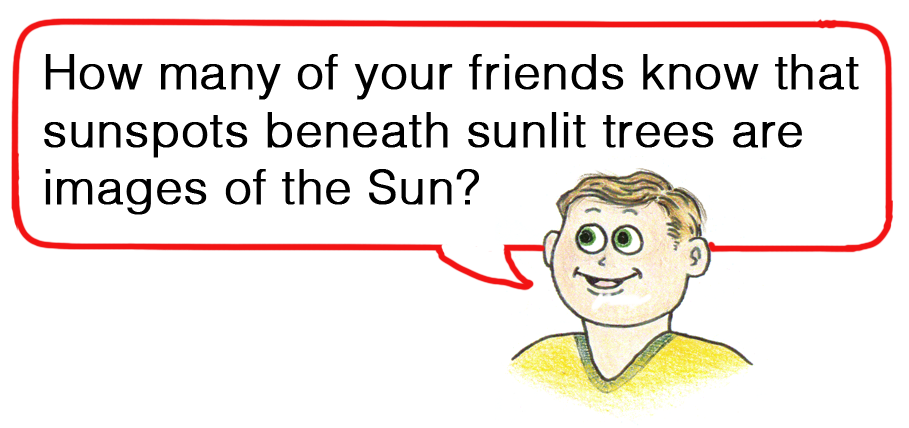
Spots of sunlight on the ground
It would be nice to teach outdoors near sunlit trees or to teach in a classroom with windows that show the same. As a guest teacher, I’m content to teach in a classroom that has a means of showing a few slides. In leading into the topic of sunballs, I first pose questions to the class: “We’ve all seen sunny areas on the ground beneath trees when the Sun is shining, right?” I ask for a show of hands. “Can anyone remember the shape of those spots? Are they a bit jagged, like the jagged openings between leaves in the branches above?” I ask students to take a guess. “The answer is no. So what is the shape of most of those spots?” The answer is circles!
Nobody knows
With an air of importance, I say that none of their friends, nobody at home, not even the principal of their school, sees the spots as circular in shape. With rare exceptions, it’s quite safe to say that nobody known to the students sees the circles! Think of it: In all the years of walking beneath sunlit trees, people never notice, until it’s pointed out (maybe by you), that the shape of most of the sunny spots on the ground are circles. When the Sun is low in the sky, the circles are stretched into ellipses. When the circles or ellipses overlap, we see irregular spots of light. There’s usually a mixture, as seen in Figure 1.
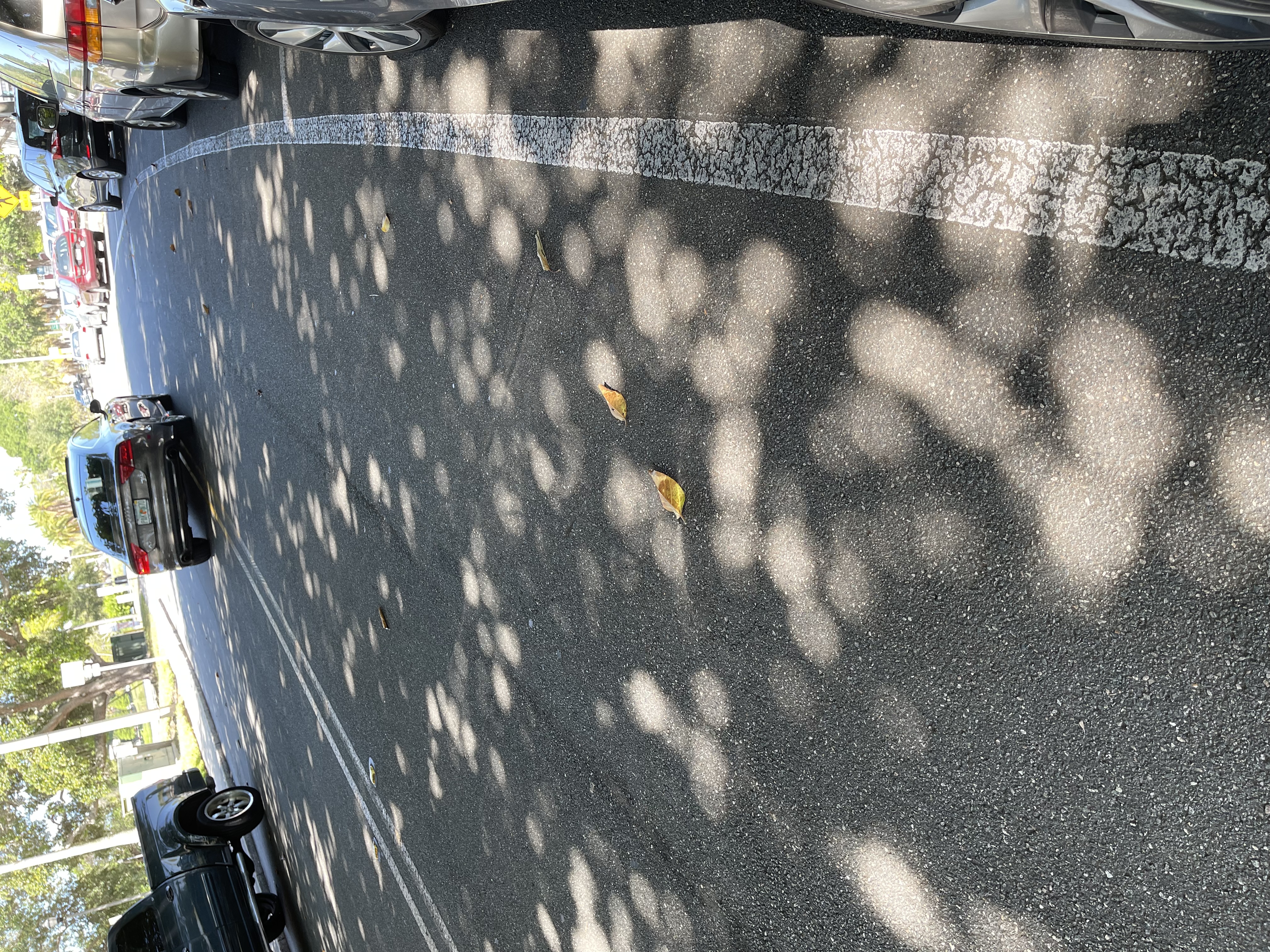
In showing the slide of Figure 1, I ask the class to look closely at the patches of light on and around the street. Even when I hint that close examination will show that most of the patches are circular, most students don’t recognize them right away. Only rarely will a student say most of them are circular. Looking and seeing, are two different thlngs. Most students look at what is not being seen! When pointed out (best with a laser pen) the experience is startling! An “aha!” moment! And another “aha!” to realize that the circular spots were there all the time!
Sunballs occur everywhere where sunlight passes through small openings, usually between leaves in trees. Look for them on vertical walls, as in Figure 2. The larger blobs of sunlight are regions where solar images overlap.
Teaching satisfaction
After my allotted time of guest teaching, I leave with warm satisfaction, having had the privilege of introducing valuable information that students will likely remember for a lifetime. Since sunballs aren’t part of their curriculum, they’d likely never see sunlit areas beneath trees in this way. I enhanced the way they see things. That’s the role of a teacher—to help students better see the science that permeates their surroundings.
Pinhole images
To make sense of sunballs, we should first understand the images cast by pinhole-sized openings. The first cameras admitted light through a small pinhole. A make-it-yourself pinhole camera can be approximated with an empty shoe box (Figure 3). Use a sharp pencil to poke a small hole through the cardboard at one end of the box. At the opposite end, the screen, replace the cardboard with transparent paper. The small size of the pinhole allows distinct rays of light to shine on the screen without the possibility of other rays overlapping and smudging the image. Without overlapping light rays, clear images are formed. If you view the box from the right side, can you see why the image of the flower is upside down?

Personal pinholes
How small should a pinhole be to cast a clear image? The answer depends on how far the image is from the pinhole opening. Look at your own hands, one overlapping the other with fingers spread. The openings between your fingers are rectangular in shape. Hold your crossed fingers in sunlight. When held close to the ground, the openings do not act as pinholes (Figure 4a). But hold your crossed fingers about a meter or so from the ground and the sunlight that passes between your fingers casts circular images of the Sun (Figure 4b). Try this and see that pinhole openings need not be circular, just relatively small compared with the distance to the image.
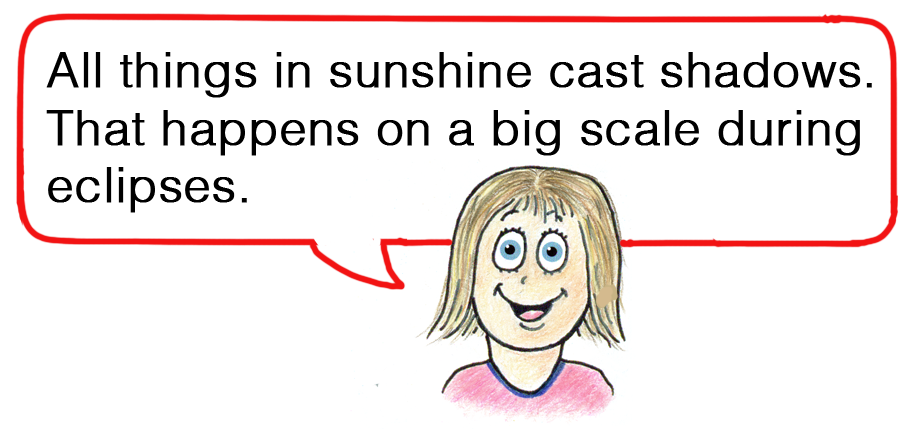
The Sun’s diameter is about 1/100 the Earth-Sun distance. Correspondingly, the width of a sunball is about 1/100 its distance to its “pinhole” source. The sunballs in Figure 5 are about 10 centimeters wide because they’re cast through tree openings some 10 meters above. Passersby don’t notice that my mother-in-law, Siu Bik Lee, sits among sunballs on the sidewalk. Unless the presence of sunballs is pointed out, the general public doesn’t notice them. A favorite activity of mine is pointing them out to people who seem to be receptive to a bit of sidewalk physics.
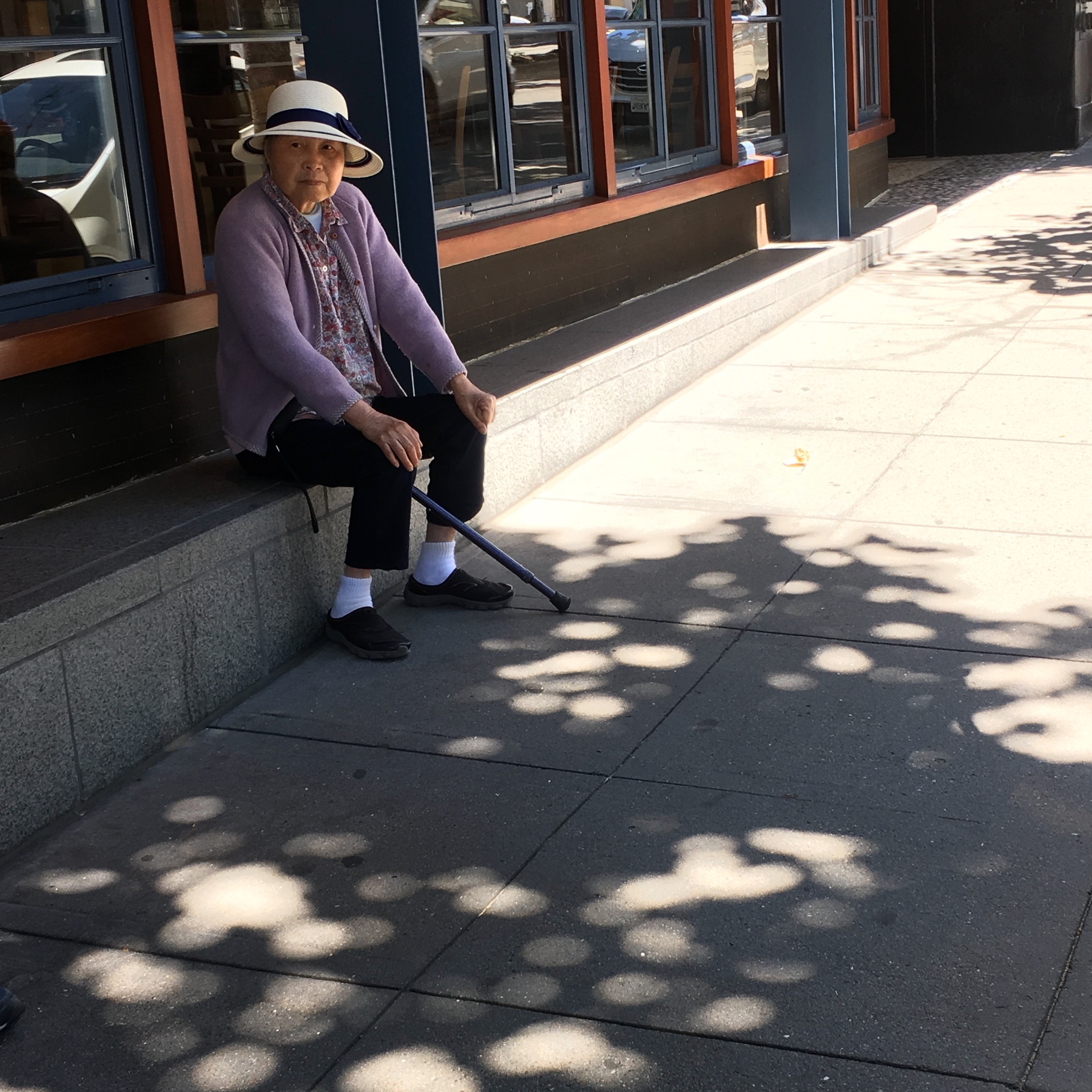
Sunballs during a partial solar eclipse
Sunballs are altered during a partial solar eclipse. As the new Moon passes in front of the Sun, the circles become crescents, as shown in Figure 6 bottom. The relatively small images attest that the image-casting tree is correspondingly short compared with the taller trees of Figure 5. Sunballs or crescents with effective diameters of 3 centimeters in Figure 6 are cast by openings about 3 meters above the sidewalk.

Sunballs during an annular eclipse
An annular eclipse occurs when the disk of the Moon blocks the center and most of the Sun rather than covering it completely as in a total eclipse. This happens when the Moon is near apogee—the farthest point from Earth in its elliptical orbit. Then viewers see “a ring of fire” surrounding the dark disk of the Moon. On the ground are not circular sunballs or crescents, but rings, as shown by Paul Doherty in Figure 7.
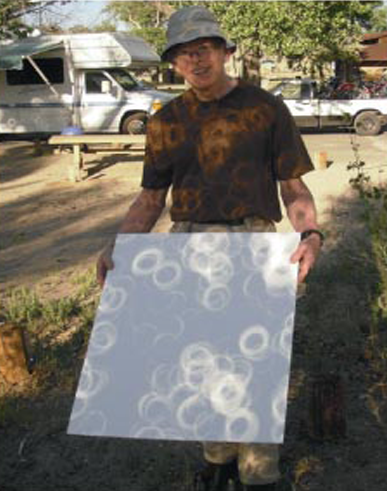
The Moon’s distance from Earth is increasing
In years far in the future, annular eclipses will be the norm. That’s because the Moon is getting farther from us year by year. Each time we see a full Moon, it is about one-quarter of a centimeter farther away. The increase in distance is due to tidal friction between Earth’s oceans and the ocean bottom that slows Earth’s rotation while speeding up the Moon in accord with angular momentum conservation. Instead of sunballs with the shape of circles, future observers will witness solar rings.
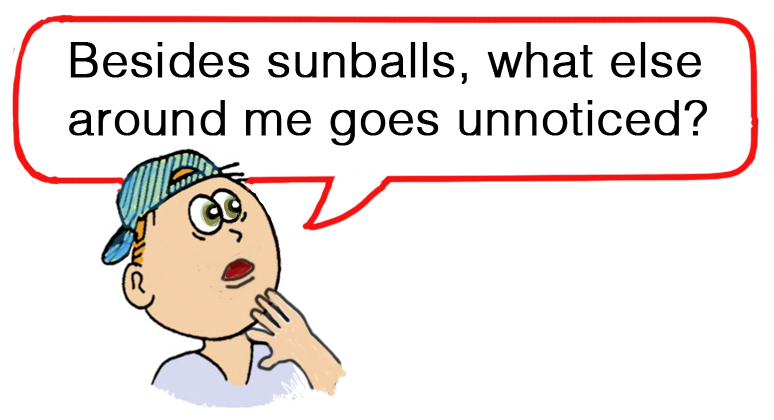
Teaching is about sharing knowledge
Think about it. We see what we expect to see. And often what we see is something that a teacher has pointed out. A teacher is one who tells us what to look for in nature. It’s nice to be the teacher who directs students to witness a first look at sunballs in a park or a tree-lined street, or the crescent-shaped ones if luck is on the side of witnessing a partial solar eclipse. How refreshing to learn how much of nature, like the overlooked sunballs, has always been there. And we learn that so much of the nature that surrounds us goes unnoticed—that is, until someone like you or me comes along . . . pointing out what to look for.
On the web
See complementary student tutorial screencast 109 on www.HewittDrewIt.com, and on www.ConceptualAcademy.com.
Paul G. Hewitt (pghewitt@aol.com) is the author of Conceptual Physics, new 13th edition; Conceptual Physical Science, 6th edition, coauthored with Leslie Hewitt and John Suchocki; and Conceptual Integrated Science, 3rd edition, with coauthors Suzanne Lyons, John Suchocki, and Jennifer Yeh.
Earth & Space Science Phenomena Physics Teaching Strategies High School


